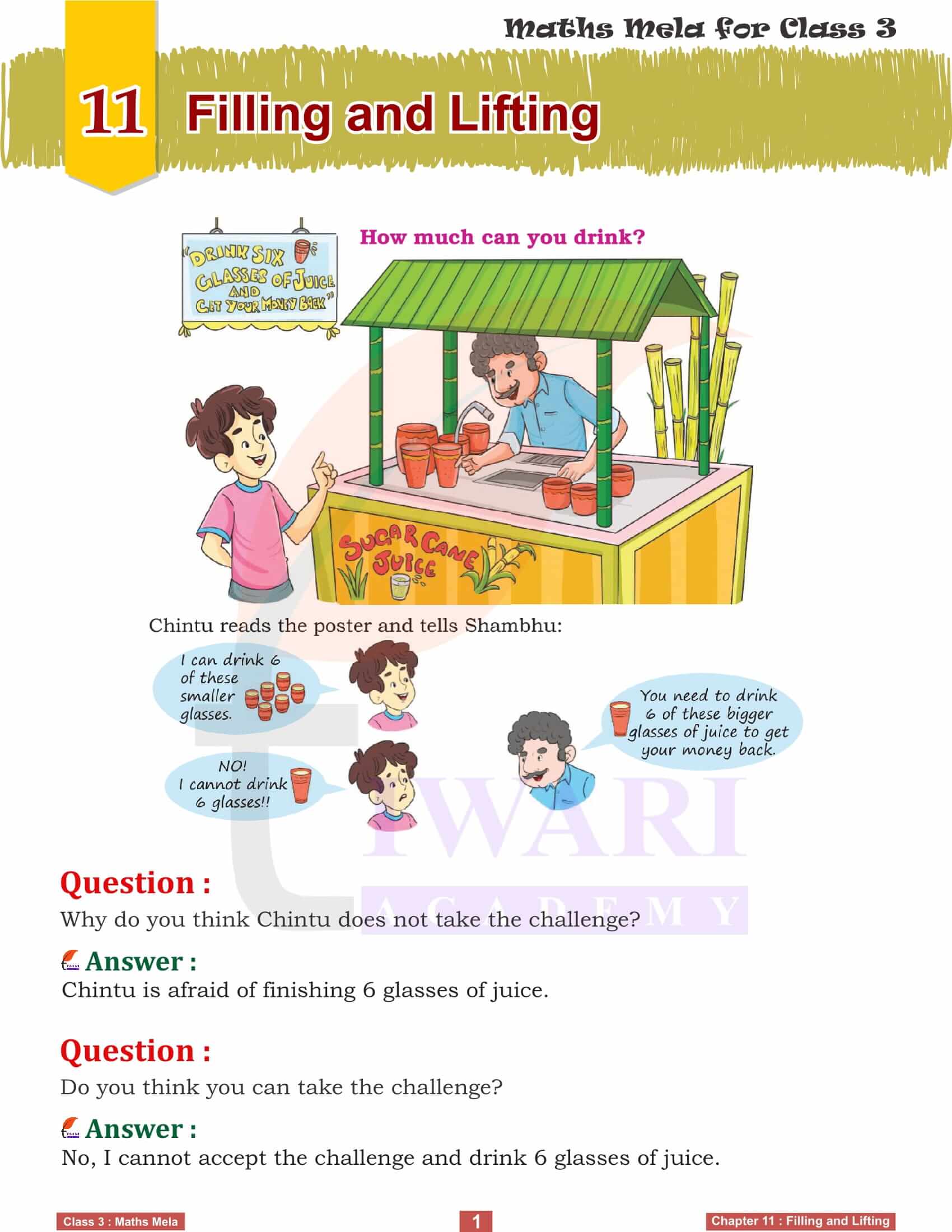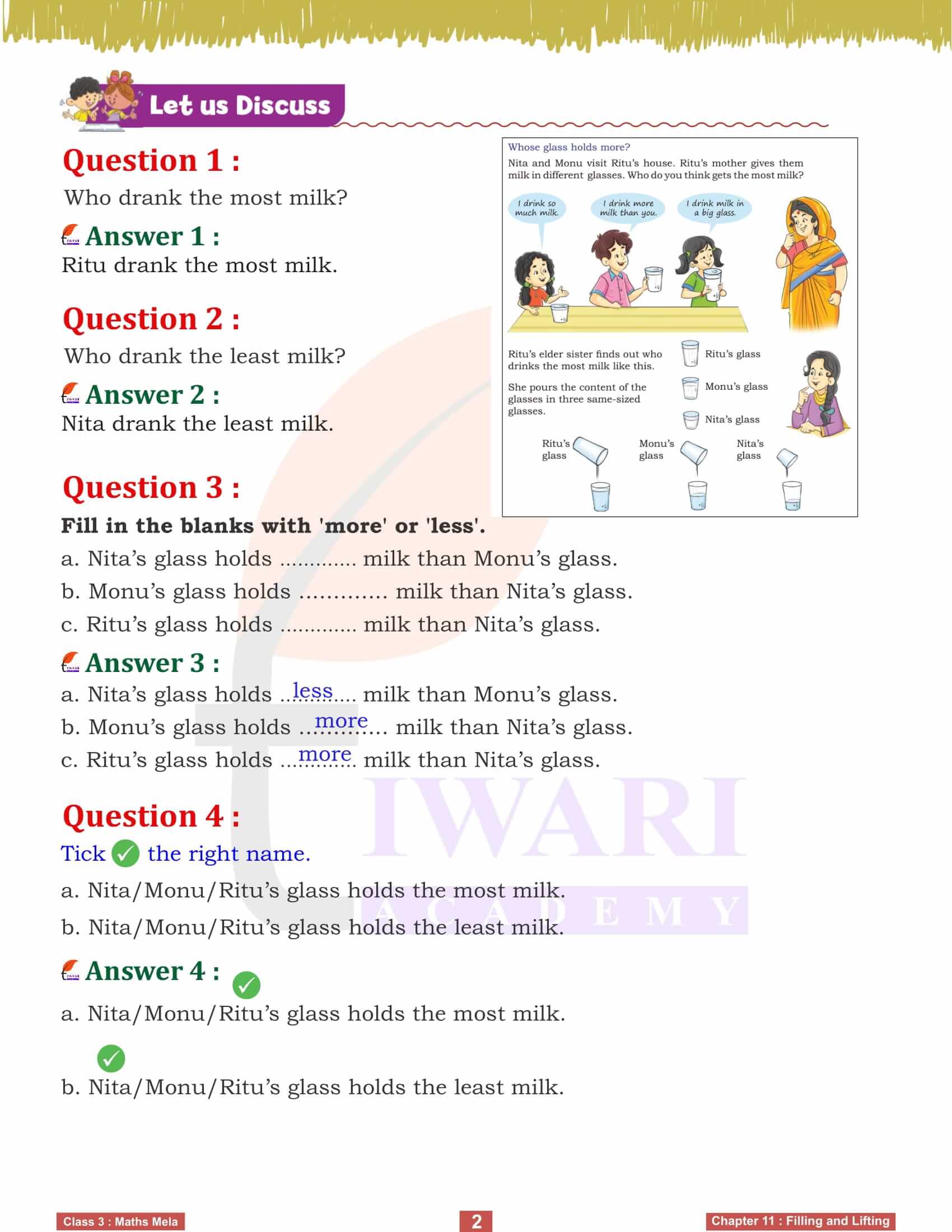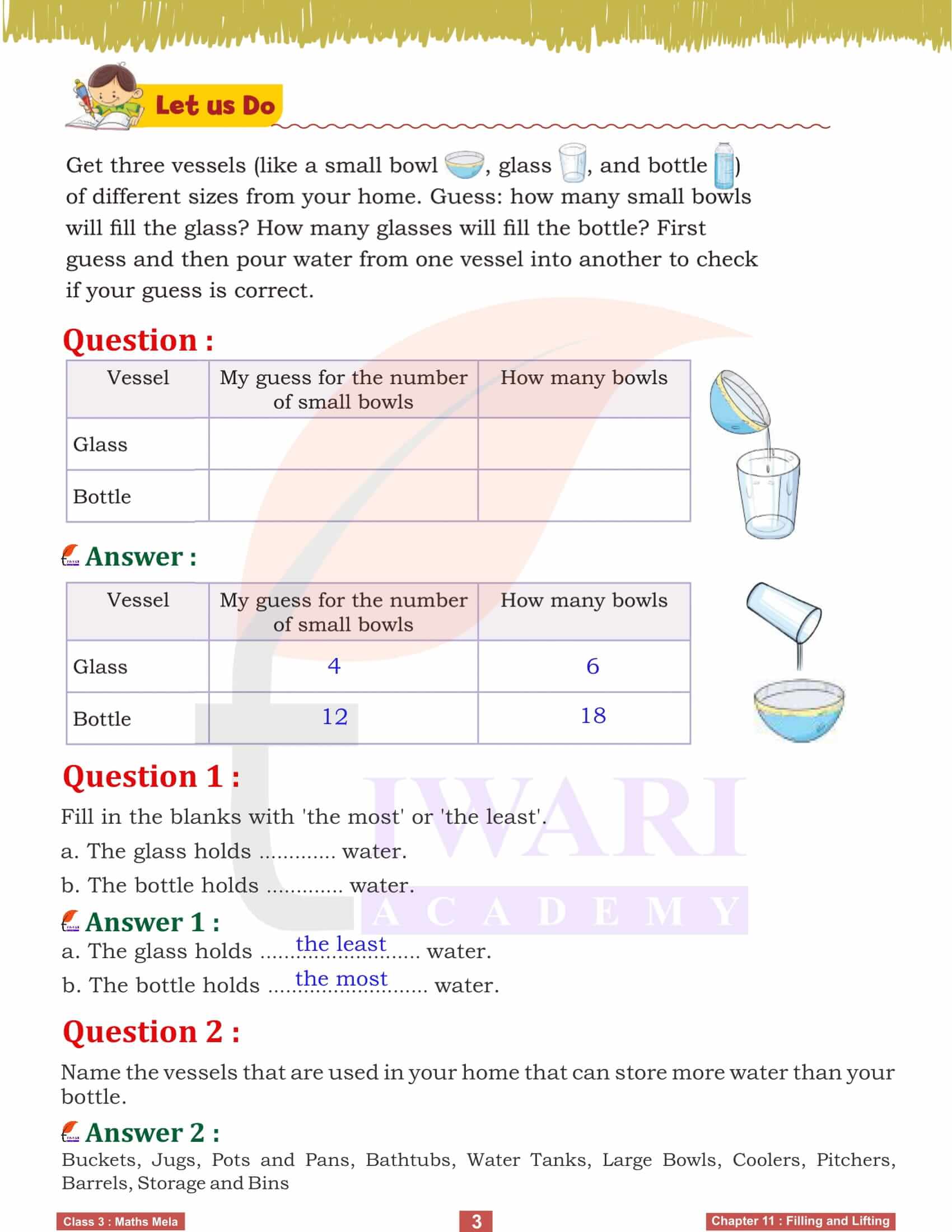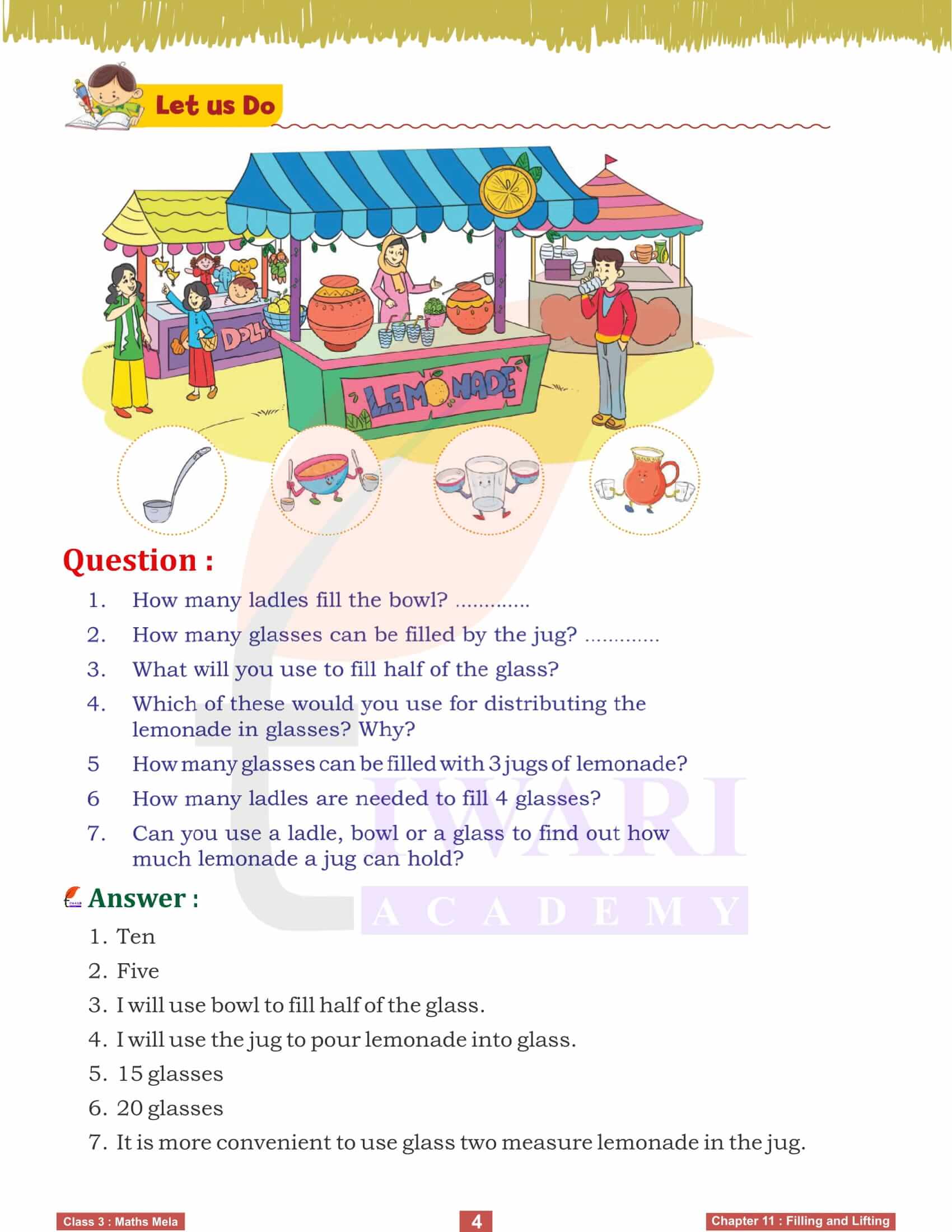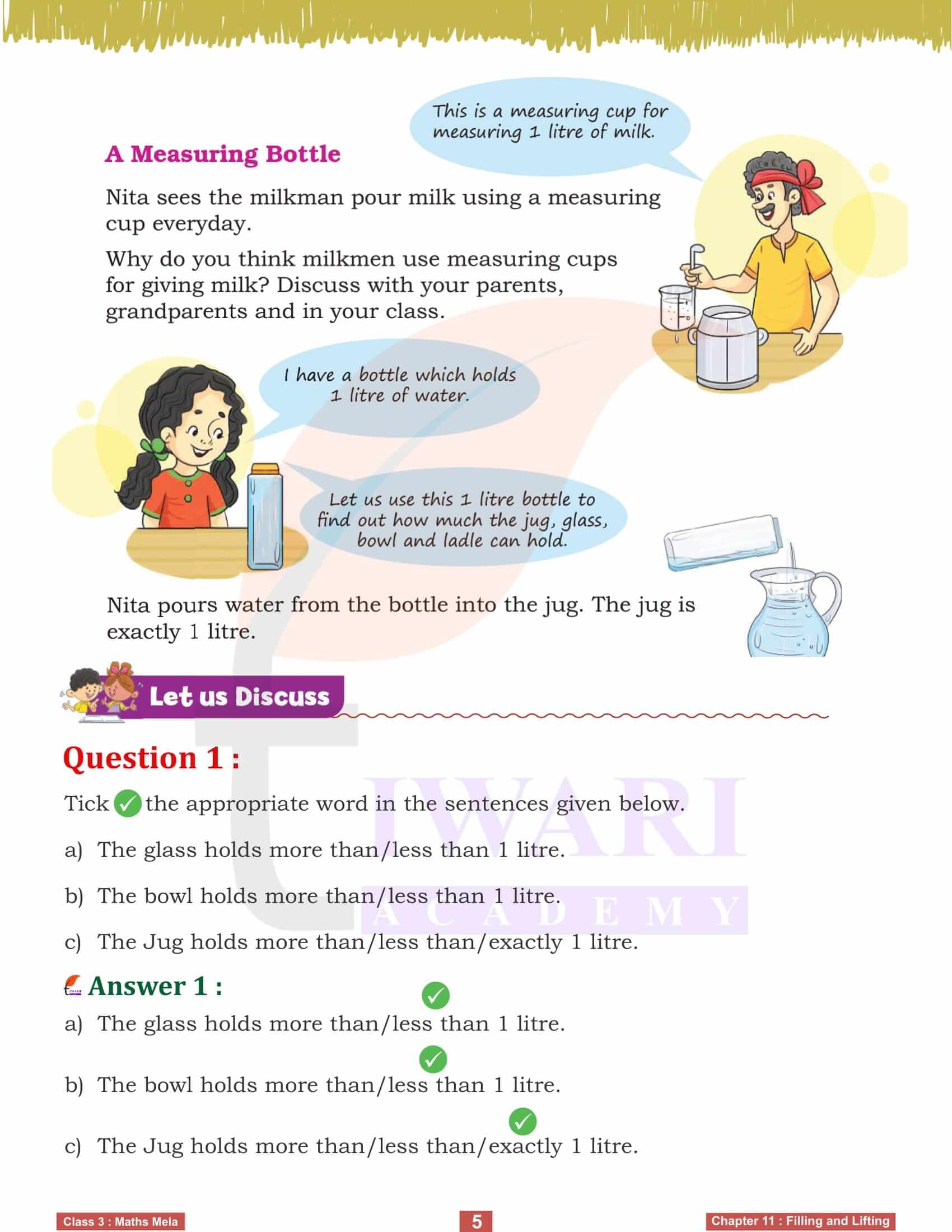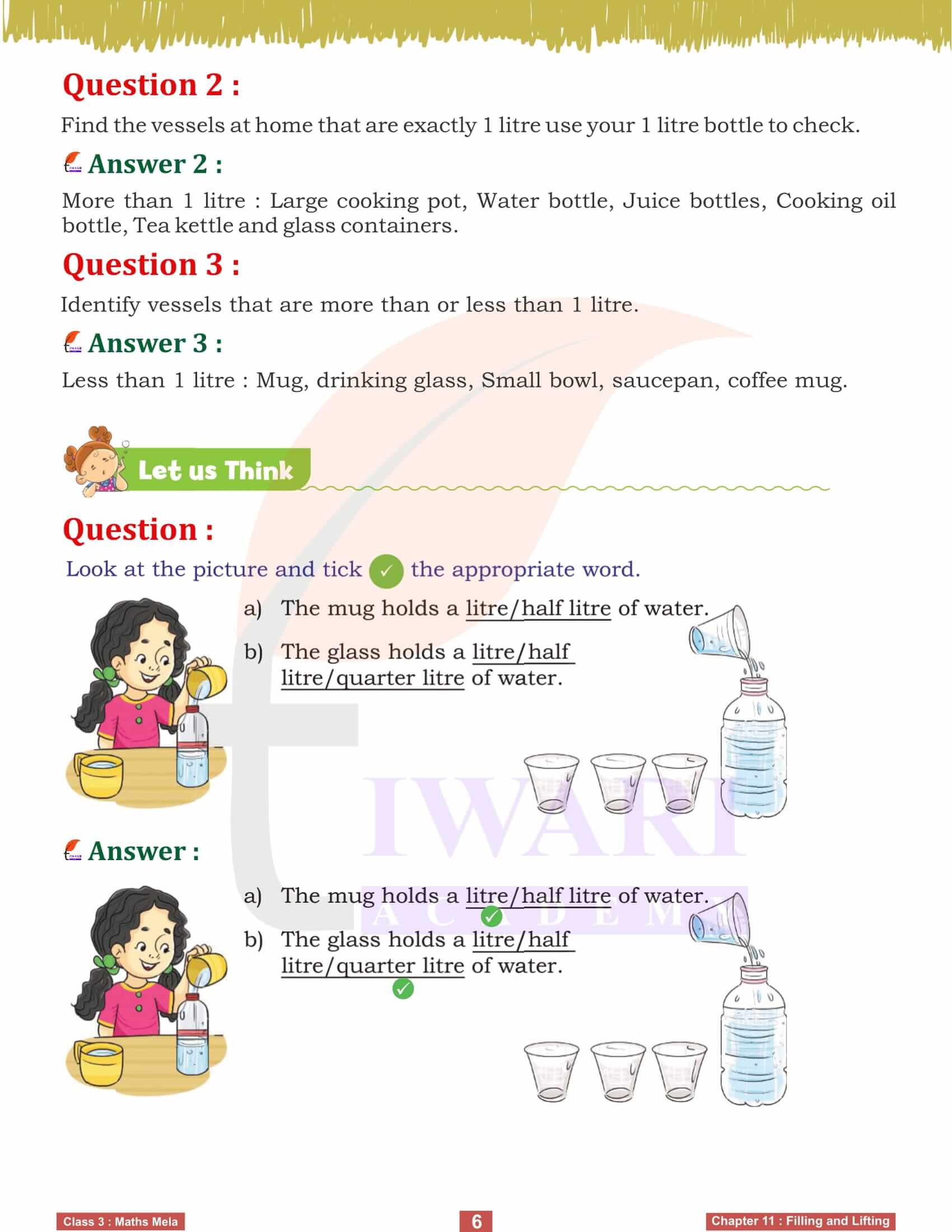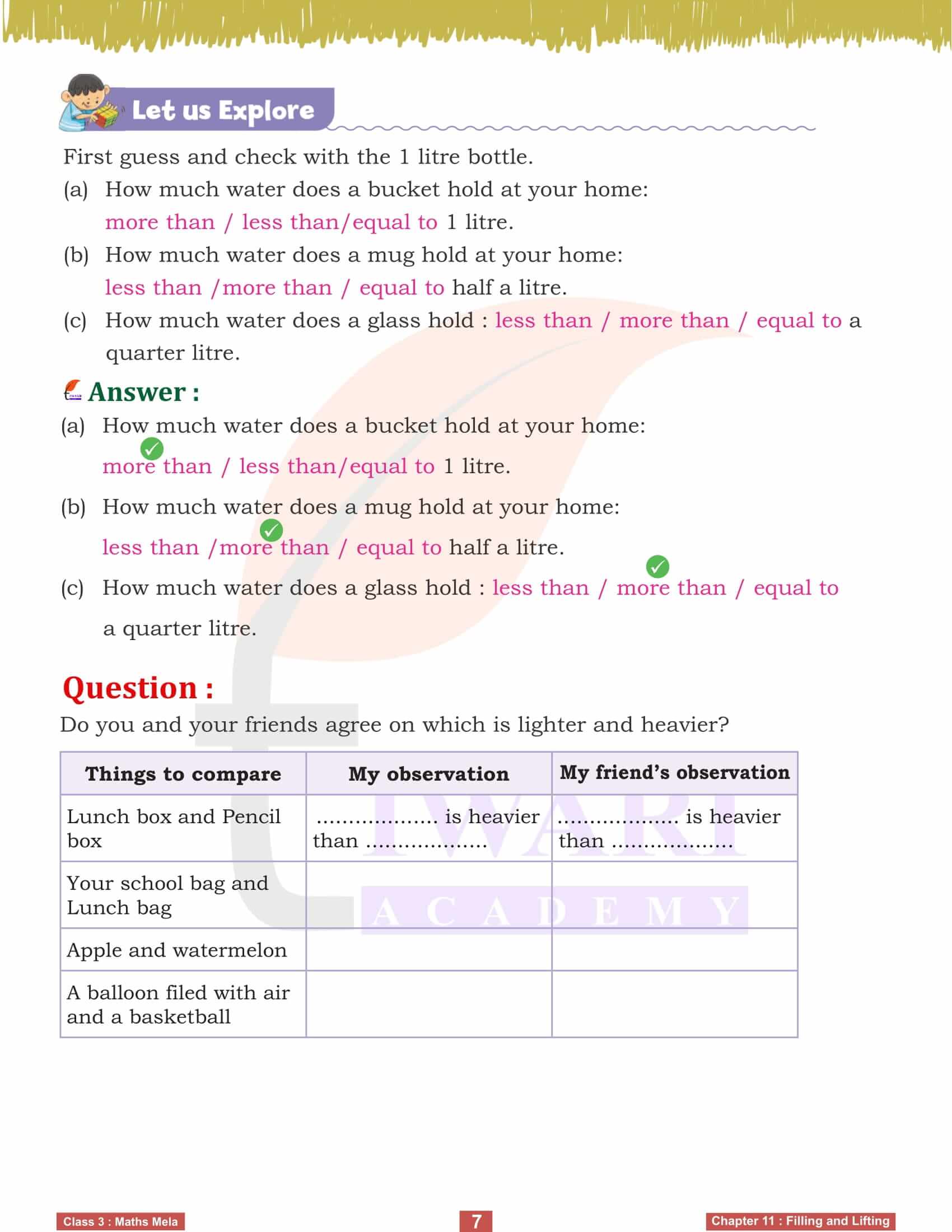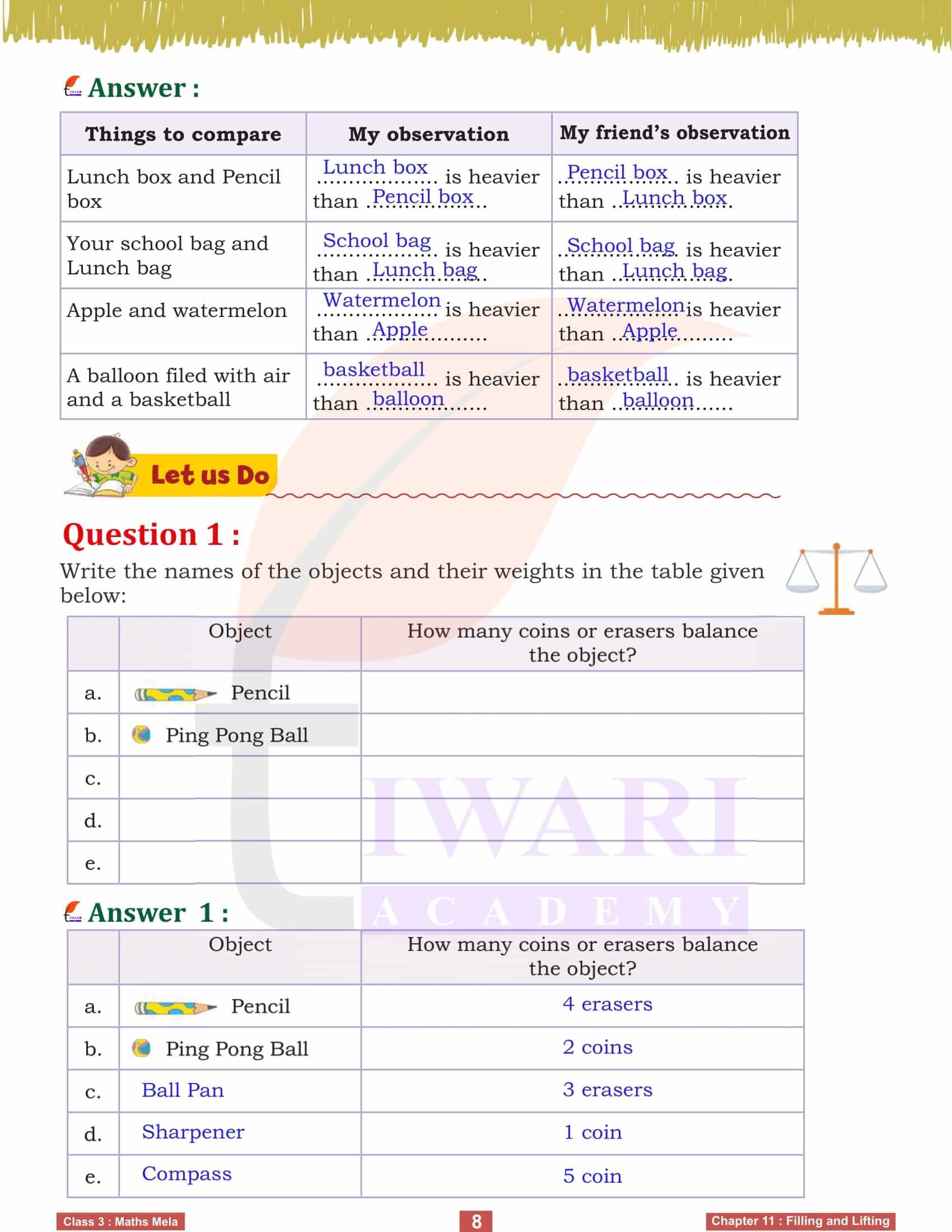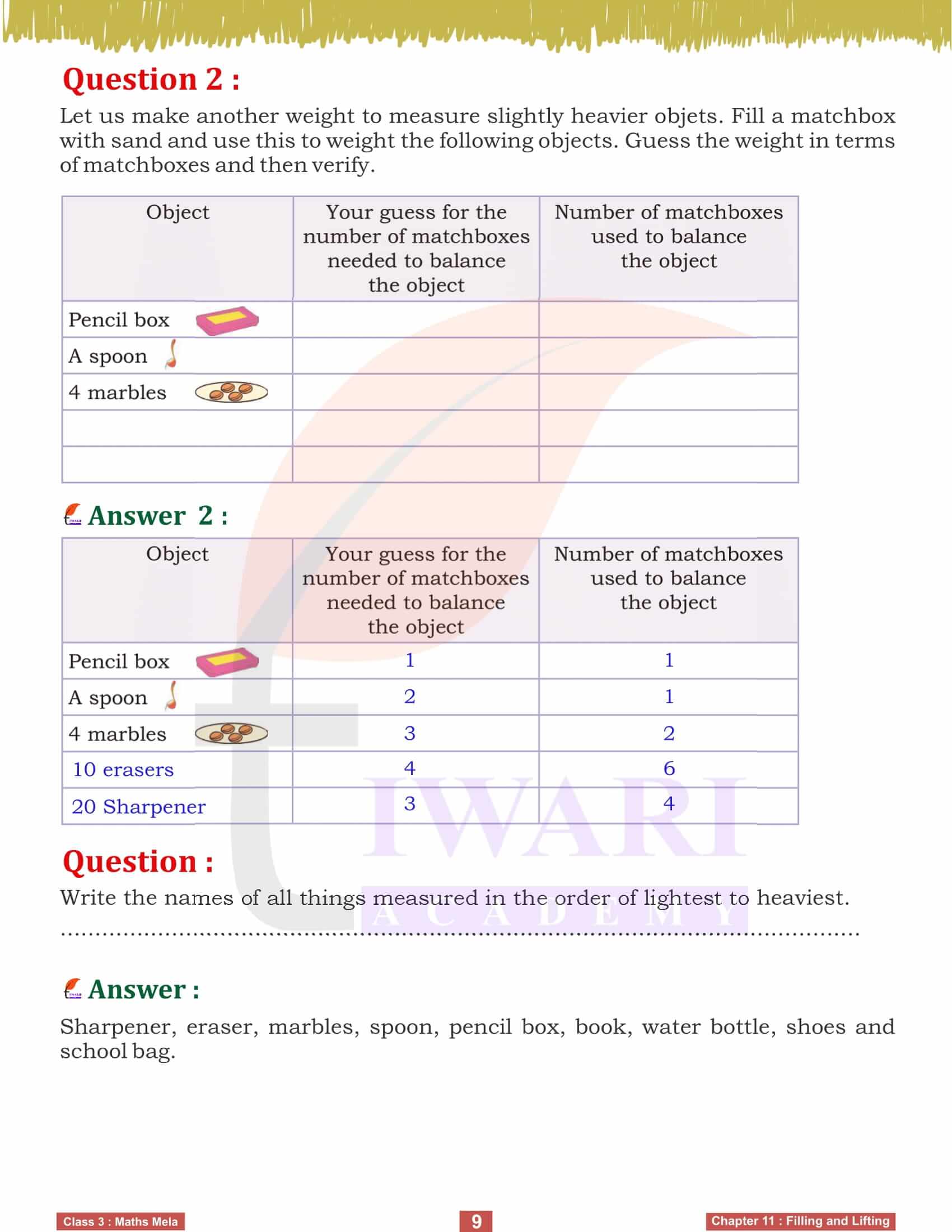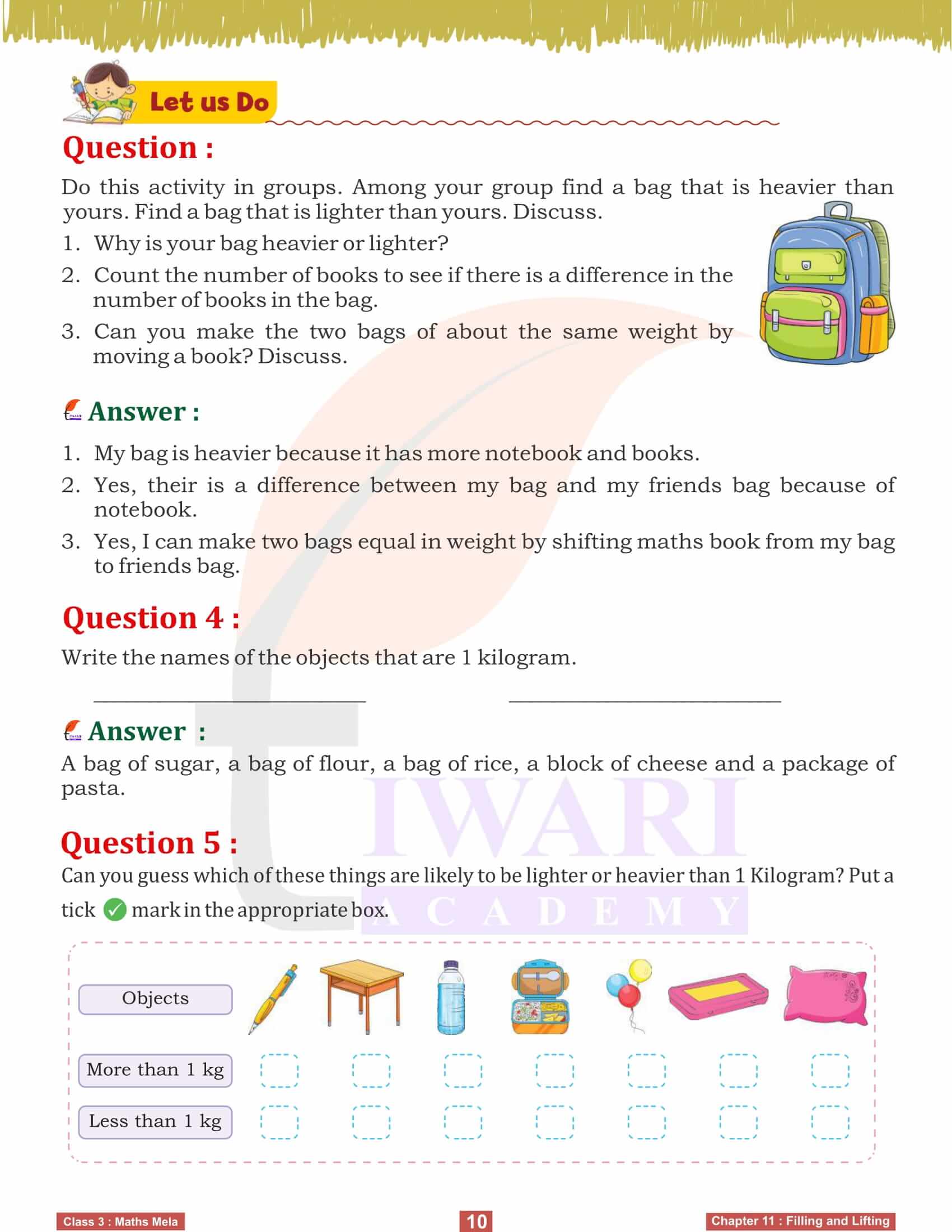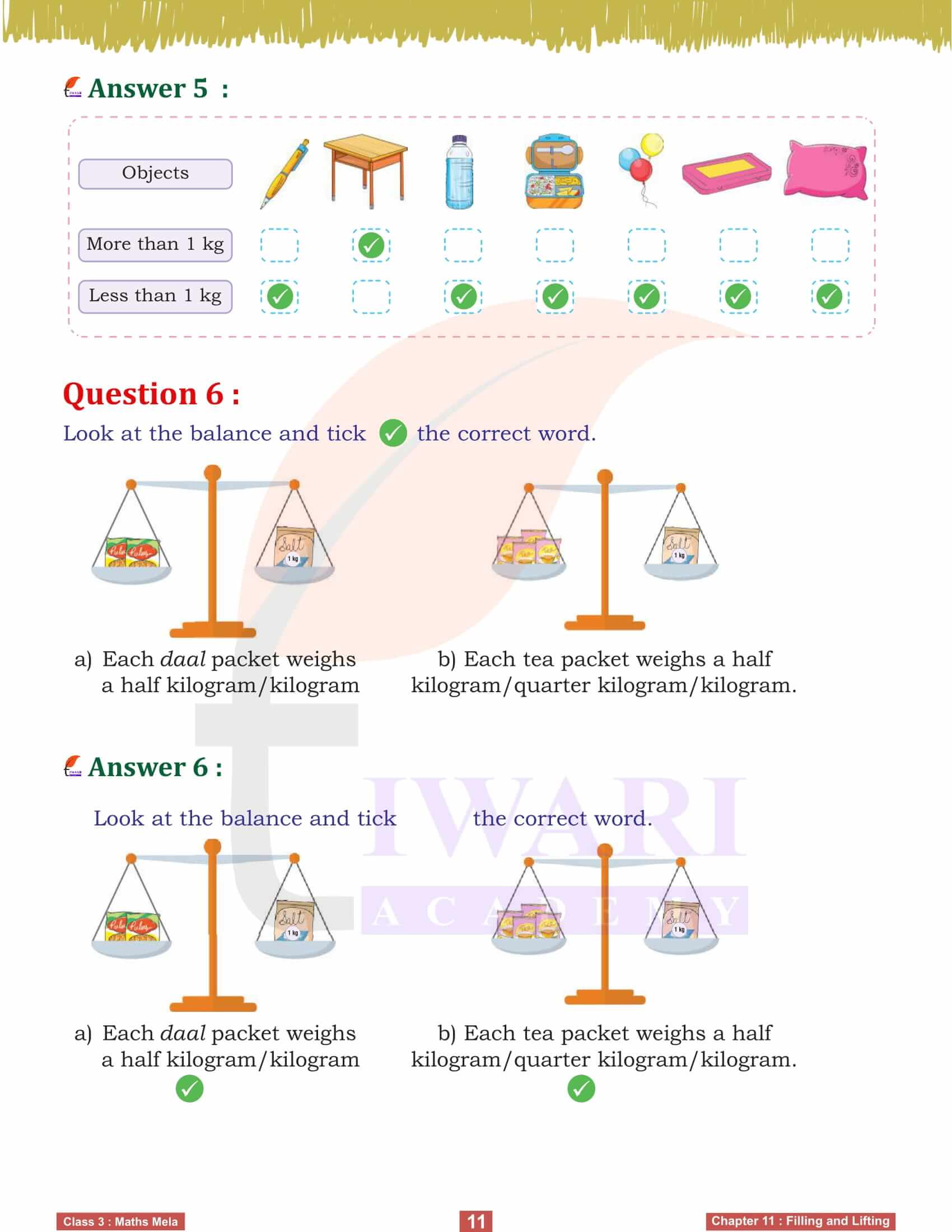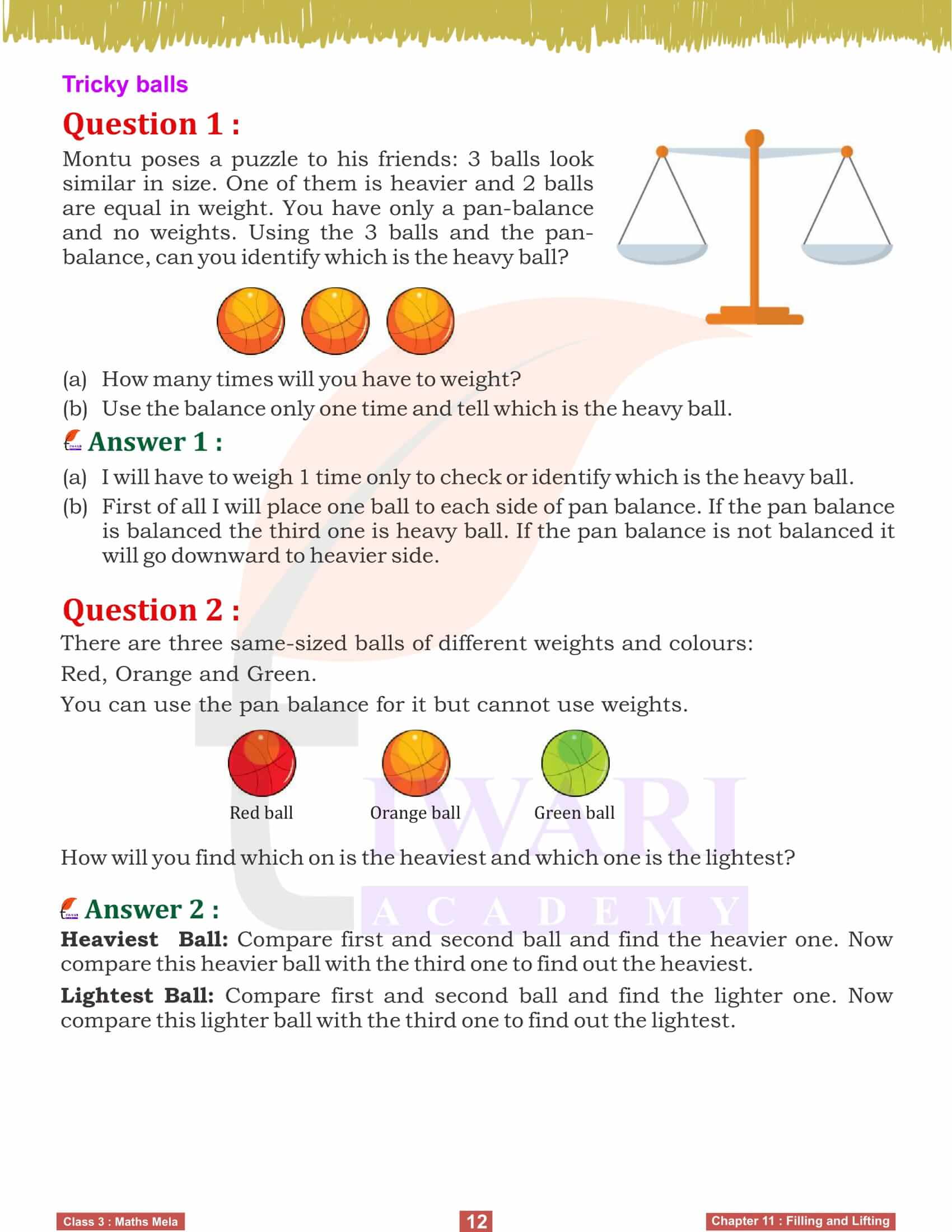NCERT Solutions for Class 3 Maths Mela Chapter 11 Filling and Lifting in Hindi and English Medium updated for session 2025-26. Chapter 11 of class 3 Maths Mela, introduces the concepts of capacity and weight. Students engage in activities that involve measuring and comparing volumes and weights, such as filling containers and lifting objects. These practical exercises help students grasp the concepts of heavier and lighter, more and less, in a hands-on manner.
Preparation Tips for Class 3 Maths
Class 3 Maths Mela Chapter 11 Filling and Lifting
Chapter 11 Filling and Lifting – Introduction to Capacity Measurement
In Chapter 11 of Class 3 Maths, Filling and Lifting, we explore the concept of capacity and how different containers can hold different amounts of liquid. This chapter helps students understand and visualize the idea of capacity through engaging activities and practical examples. By examining everyday objects like glasses, bowls, and bottles, students learn to estimate, measure, and compare capacities. This chapter aims to make students comfortable with the idea of volume and capacity, using relatable scenarios and hands-on activities to solidify their understanding.
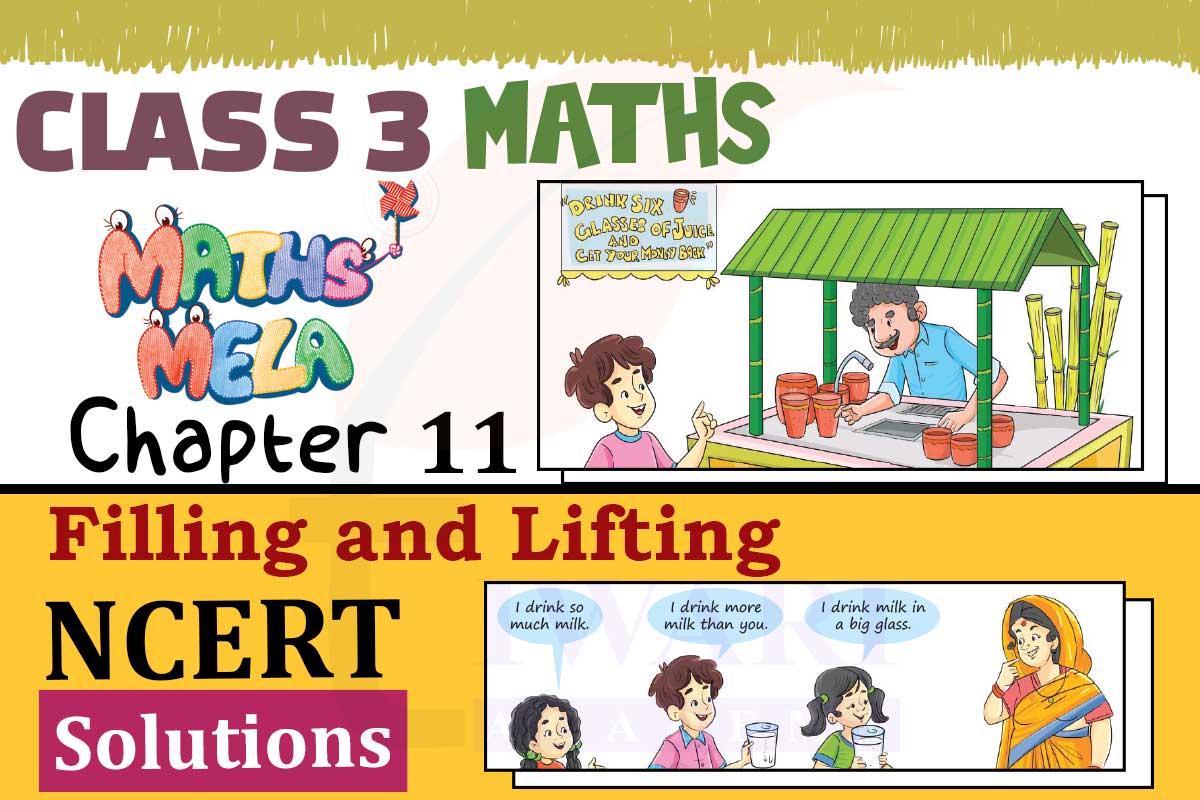
Understanding Capacity with Everyday Examples
One of the main methods used in this chapter is comparing the capacities of various containers. Students are encouraged to bring different vessels from home, such as a small bowl, glass, and bottle. They guess how many small bowls of water can fit into the glass or bottle and then check their guesses by pouring water from one vessel into another. This activity helps students grasp that different containers can hold varying amounts of liquid, and it also introduces them to the concept of estimation and measurement in a fun and engaging way.
The Challenge of Bigger and Smaller Glasses
The chapter 11 includes a scenario where Chintu and Shambhu discuss the challenge of drinking six glasses of juice. Chintu is hesitant because the glasses are large. This discussion leads to an important lesson: the size of the glass affects the number of glasses one can drink. If the glass is bigger, fewer glasses are needed to consume the same amount of liquid. This example helps students understand that capacity is relative and depends on the size of the container, making it a crucial concept in real-life situations.
Practical Measurement Activities
Students are given practical activities to enhance their understanding of capacity. For instance, they measure water using different vessels and determine whether the vessels hold more or less than one liter. Activities like pouring water into different containers and using measuring cups help students learn about standard units of measurement. These exercises not only teach students how to measure capacity accurately but also emphasize the importance of using standardized units in daily life.
Comparing and Discussing Capacities
The chapter 11, of class 3 mathematics, encourages students to compare the capacities of different containers and discuss their findings. For example, students might compare the amount of milk in different-sized glasses to determine who drank the most milk. This kind of comparative analysis helps students develop critical thinking skills and understand how to use measurements to make informed decisions. Discussion questions prompt students to articulate their observations and conclusions, fostering a deeper understanding of the concepts.
Exploring Capacity with Creative Examples
To keep the learning process engaging, the chapter includes creative examples and puzzles. One such example is the “Tricky Balls” puzzle, where students use a pan balance to identify the heaviest ball among three that look similar in size. This puzzle encourages students to think critically and apply their understanding of weight and balance. Such engaging activities make learning about capacity and measurement enjoyable and memorable.
Class 3 Maths Chapter 11 Real-Life Application
Chapter 11, “Filling and Lifting,” concludes by emphasizing the practical applications of understanding capacity in real life. Whether it’s determining how much juice to pour into a glass or measuring ingredients for a recipe, knowing how to measure and compare capacities is a valuable skill. The chapter ensures that students are not only able to perform measurements accurately but also understand the significance of these measurements in their daily lives. By the end of the chapter, students are well-equipped with the knowledge and skills to handle various measurement tasks confidently.
Related Links
